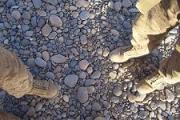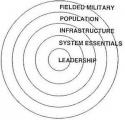An overemphasis on training for close quarter combat (CQC), or close quarter battle (CQB), in recent years has resulted in its overuse in combat, often in situations where more appropriate options exist.
Platoon by platoon, the Army is learning the hard way how hazardous it is to fight room to room against a well prepared and often suicidal opponent. We can no longer afford to learn the lesson individually. It is time for a candid discussion on this subject, and to address the problem as a responsive, learning, and adaptive Army....











Bookmarks